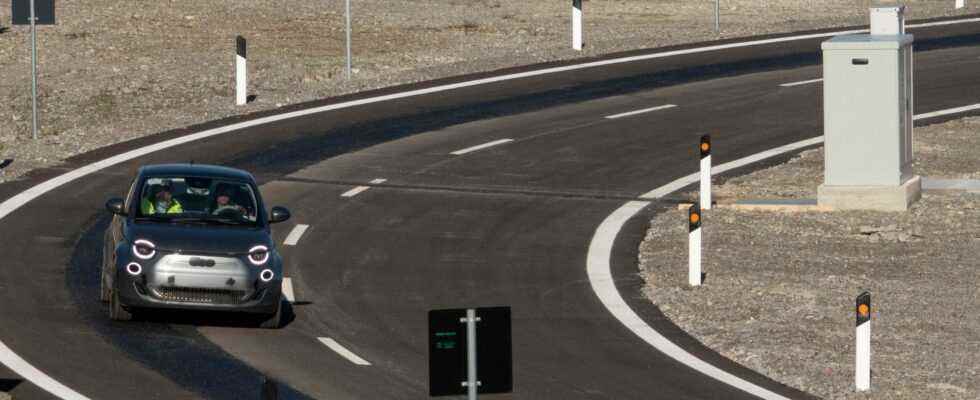Stellantis is currently testing a new charging system for its electric cars, via coils placed under the asphalt of the road. The first results with a Fiat 500 seem conclusive.
While there are now more and more charging infrastructures in France and around the world, the increase in the number of electric cars on the road could however pose a problem. Indeed, if the terminals do not develop even more quickly, whereas there are currently 60,000 in France, there could be traffic jams.
Hence the importance for manufacturers to find solutions, increasing the range of their cars or even the maximum load power that they can withstand. But some, like the Stellantis group, are trying to develop other technologies, even eliminating the need to go through charging stations.
A Fiat 500 that charges wirelessly
The Franco-Italian group has indeed experimented with an astonishing dynamic induction charging system, also known as DWPT (Dynamic Wireless Power Transfer). The term dynamic means that the technology is made for cars in motion, more difficult to implement than wireless charging when stationary. Announced by Stellantis in a recent press release, it is therefore on the track of the Arena del Futuro circuit, located in Chiari, Italy that the firm tested this promising technology with the new Fiat 500e. A few years later Renault and its Kangoo which could recharge at 20 kW at 100 km/h on a short track created for the occasion in 2017.
As Stellantis explains, the technology is ” based on loops placed under the asphalt that transmit energy directly to cars, trucks and buses, thus saving them from having to stop at stations to recharge their batteries“. And the first results are satisfactorywhile Stellantis claims that “ tests show that the efficiency of the energy flow from the asphalt to the car is comparable to the standard efficiency of fast charging stations“. Otherwise, ” measurements of the intensity of the magnetic field prove that it has no impact on the driver, his passengers“.
A promising but restrictive technology
But then, how does it work? In reality, it is very simple. The asphalt is supplied with direct current via coils placed just below, then it transmits the energy to the vehicles driving on it, thanks to a receiver (another coil) installed on them. This device offers many advantages, such as the use of thinner cables as for the distribution of alternating current and made of aluminium, a less expensive material than the copper generally used in charging stations.
Ranked among the 100 most important inventions of the year 2021 according to Time Magazine, this system could subsequently be used on roads, but also in car parks, ports and airports. However, the technology is restrictive and expensive to set up, since it requires heavy work on the transport infrastructure. In addition, vehicles must incorporate the necessary and compatible technology. A good idea, but we shouldn’t see it happening right away on our roads.
https://www.frandroid.com/produits-android/automobile/voitures-electriques/1359439_leurope-veut-une-borne-de-charge-rapide-tous-les-60-km-mais-la-france-en- is far
To follow us, we invite you to download our Android and iOS application. You can read our articles, files, and watch our latest YouTube videos.
